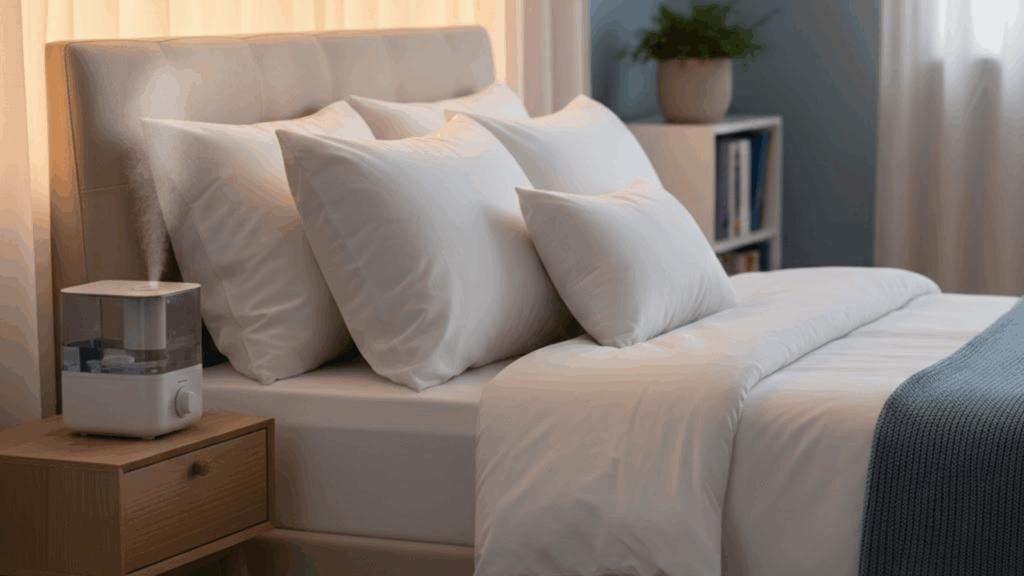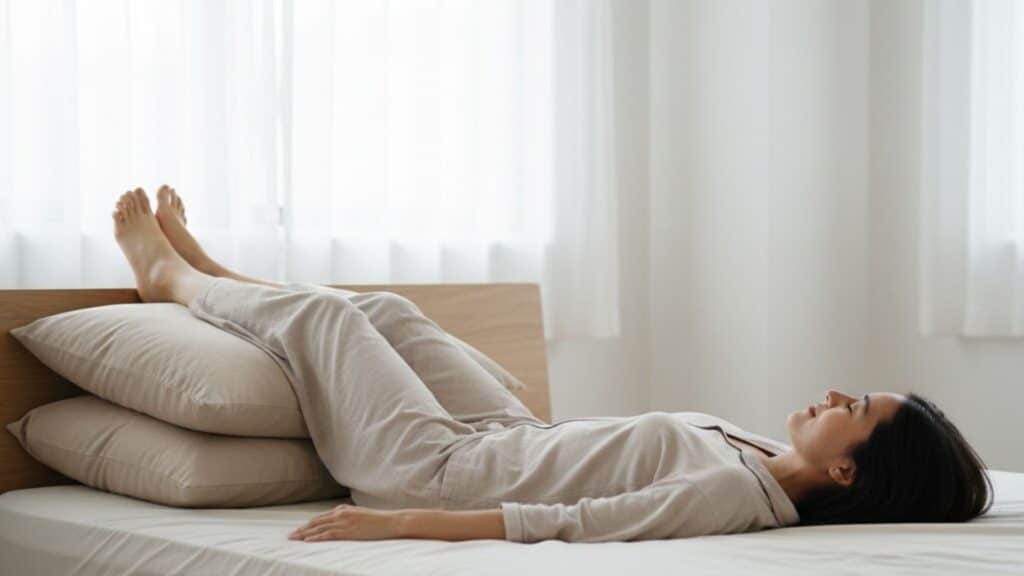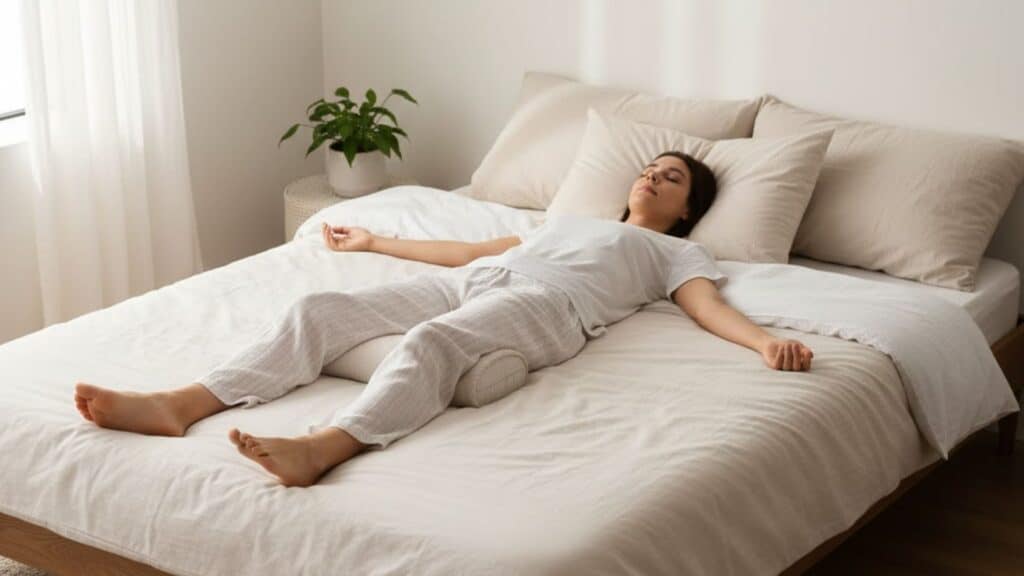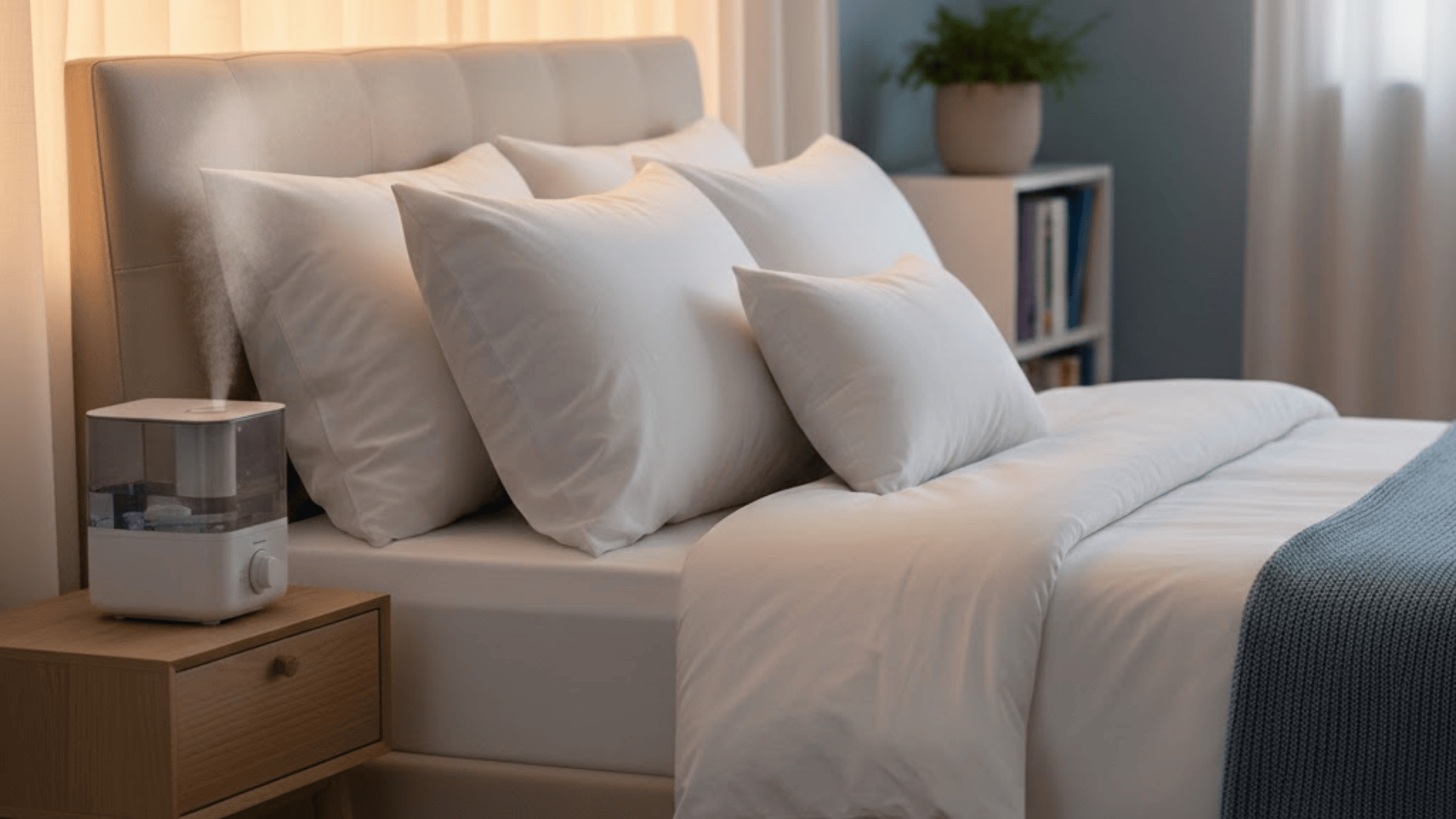I’ve struggled with chest congestion more times than I can count, and I’ve learned something surprising: the way you position yourself while sleeping can make a real difference in how easily you breathe and clear mucus from your lungs.
When you’re dealing with a cold, flu, allergies, asthma, or recovering from respiratory issues, gravity becomes your ally or your enemy, depending on how you lie down.
Your airways naturally drain better in certain positions, helping you breathe easier and sleep more soundly. Let me share what I’ve found about using sleep position to support your lung health when you need it most.
What Happens to Your Lungs When You Lie Down?
When you lie flat, everything shifts inside my chest. The diaphragm is compressed by abdominal organs, reducing the amount the lungs can expand with each breath.
Mucus that was draining throughout the day suddenly pools in the airways, triggering that familiar nighttime cough.
Gravity stops helping and starts working against you, allowing secretions to settle in your lower lung passages. This pooling narrows airways, making each breath feel tighter and sometimes triggering wheezing.
The restricted airflow explains why chest tightness often peaks at night, and why I find myself propped up on pillows when congestion hits, instinctively seeking a position where breathing comes easier.
How to Sleep with Chest Congestion: Sleeping Positions to Try

Not all sleeping positions are created equal when your lungs need help. I’ve ranked these based on how effectively they use gravity to drain mucus, keep airways open, and reduce nighttime breathing struggles.
1. High-Inclined Back-Sleeping (Most Recommended)
This is my go-to position when congestion hits. Elevating my head and chest at a thirty to forty-five degree angle lets gravity pull mucus down and away from my upper airways.
I prop myself up with multiple pillows stacked in a wedge shape, or use an adjustable bed if available.
This position dramatically cuts down my nighttime coughing and prevents that suffocating feeling of mucus pooling in my throat while keeping my airways more open throughout the night.
2. Side-Sleeping on the Left Side
Sleeping on my left side gives my right lung, which is slightly larger, more room to expand fully.
This position promotes better airflow and encourages mucus to drain toward my throat, where I can clear it more easily.
I find this especially helpful when sinus drainage is adding to my chest congestion, as it helps everything flow in the right direction rather than pooling in my airways.
3. Side-Sleeping on the Right Side
Sometimes my right side just feels more comfortable, and that’s okay because this position has its own benefits.
I’ve found it particularly effective for managing postnasal drip since it changes the drainage angle from my sinuses.
While my left lung gets slightly more compression in this position, the comfort factor often outweighs this minor drawback, and comfortable sleep still beats restless tossing and turning.
4. Prone Position (Lying on the Stomach): For Short Intervals
Lying face down might sound uncomfortable, but it genuinely helps open up the back portions of my lungs where mucus often settles.
Hospitals actually use this “proning” technique for patients with severe respiratory distress because it improves oxygen levels.
I’ll spend fifteen to thirty minutes in this position during the day as a lung expansion session, but I never sleep this way overnight since it strains my neck and can restrict breathing.
Position to Avoid: Flat on Your Back
Lying completely flat on my back is the worst position when my lungs are congested. Gravity pulls mucus directly into my airways, my diaphragm can’t work efficiently, and I often wake up coughing or gasping.
This position allows airways to narrow and mucus to stagnate exactly where I don’t want it, turning what could be restful sleep into a night of chest tightness and constant throat-clearing.
How to Set Up Your Bed for Better Lung Drainage?
Getting the right setup makes all the difference between a restful night and hours of coughing. Here’s exactly how I arrange my bed when my lungs need support.
- Start with a wedge pillow or stack three to four firm pillows in a gradual slope from your lower back to your head, creating a thirty to forty-five degree incline
- Position the support under your entire upper body, not just your head, so your torso stays elevated, and your neck remains aligned with your spine
- Add a thin pillow under your knees if back-sleeping to reduce lower back strain and help you maintain the elevated position throughout the night
- Choose breathable, hypoallergenic pillow materials like memory foam or latex that won’t trigger additional respiratory irritation or allergies
- Adjust your bed frame to an incline setting if you have an adjustable base, aiming for the head section raised between thirty and forty-five degrees
Once you find your ideal setup, breathing through the night becomes so much easier.
Additional Nighttime Habits That Help Clear Lungs
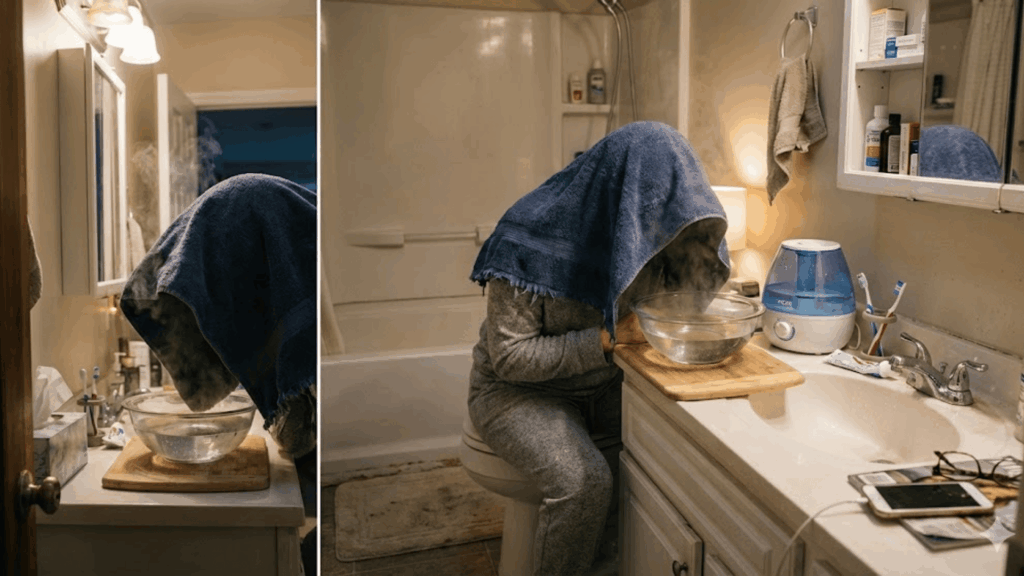
Beyond sleep position, I’ve found several pre-bedtime rituals that prime my lungs for easier breathing throughout the night.
These simple practices work alongside proper positioning to maximize mucus clearance and airway comfort.
1. Steam Inhalation Before Bed
Breathing in warm, moist air about fifteen minutes before bed loosens stubborn mucus in my airways. I lean over a bowl of hot water with a towel draped over my head, or stand in a steamy bathroom after a hot shower.
The warmth hydrates dried-out airways and thins mucus so it drains more easily once I’m propped up.
2. Humidifier Use
I keep my bedroom humidity between 30 and 50%, which prevents my airways from drying out overnight. Cool mist works best since it doesn’t encourage dust mites or mold like warm mist can.
I clean my humidifier regularly and monitor levels, since humidity above fifty percent creates conditions where allergens thrive, potentially worsening breathing.
3. Nasal & Chest Decongestion Techniques
I use saline nasal rinses to flush out mucus before bed, preventing postnasal drip. Gentle chest percussion with cupped hands helps loosen deep mucus.
A warm compress on my chest relaxes tight airways, and menthol rubs create a cooling sensation that tricks my brain into perceiving clearer breathing, though they don’t actually decongest airways.
4. Breathing Exercises for Better Lung Expansion
Pursed-lip breathing helps me empty stale air by inhaling through my nose and exhaling slowly through pursed lips. Diaphragmatic breathing strengthens my breathing muscle, making each breath more efficient.
I practice controlled coughing to bring up mucus productively, and do light chest-opening stretches like arm raises to expand my rib cage before sleep.
Daytime Practices That Improve Lung Function at Night
What I do during the day significantly impacts how well I breathe at night. These habits keep my lungs clear and functioning optimally, so I’m not fighting congestion when bedtime rolls around.
| Daytime Practice | What to Do | Nighttime Benefit |
|---|---|---|
| Staying Hydrated | Drink water consistently throughout the day | Keeps mucus thin and easy to clear, rather than thick and sticky |
| Upright Posture | Sit and stand with shoulders back, chest open | Allows full lung expansion and prevents mucus pooling |
| Light Movement | Walk, stretch, or do gentle exercise | Mobilizes mucus so it doesn’t settle deep in the airways |
| Meal Timing | Avoid heavy meals within three hours of bed | Prevents abdominal bloating from restricting diaphragm movement |
| Allergy Management | Control dust, pet dander, and pollen exposure | Reduces inflammation and excess mucus production overnight |
These daytime choices create a foundation for restful, unobstructed breathing once I finally settle into bed. Taking care of my lungs throughout the day means fewer struggles when my body needs rest most.
When Chest Congestion Might Be a Sign of Something More Serious
While most chest congestion clears up with rest and proper positioning, I’ve learned to recognize warning signs that mean it’s time to seek medical attention.
Here’s when breathing issues require professional evaluation:
- A high fever above 101°F lasting more than three days suggests possible pneumonia requiring antibiotics
- Blood in mucus or rust-colored phlegm warrants immediate medical assessment
- Severe breathing difficulty or inability to complete sentences requires emergency care
- Worsening wheezing despite treatment may indicate uncontrolled asthma or COPD exacerbation
- Congestion persisting beyond three weeks could signal chronic infection or underlying lung conditions
Trusting your instincts about your body and seeking help early can prevent complications and get you the targeted treatment you need.
Wrapping It Up
Finding the right sleeping position to clear my lungs has turned my nighttime breathing into a respiratory struggle.
Whether I’m propped up at an angle, lying on my side, or combining position changes with steam and breathing exercises, these strategies help me rest better when congestion strikes.
I’m no longer at the mercy of pooling mucus and restricted airways each night. Small adjustments to how I sleep and prepare for bed make breathing easier and recovery faster.
What positions have worked best for you when dealing with chest congestion? Share your experiences in the comments below; I’d love to hear what helps you breathe easier at night.


